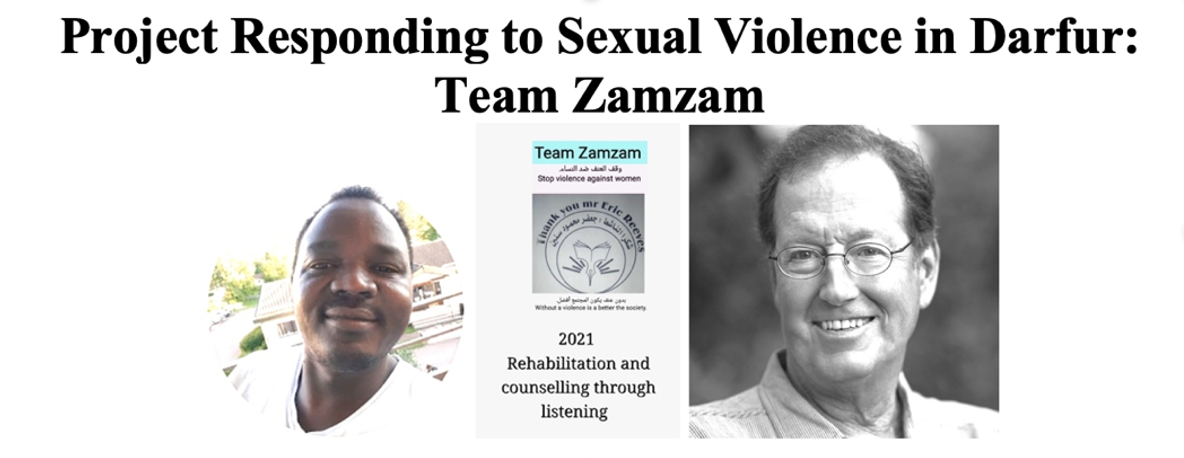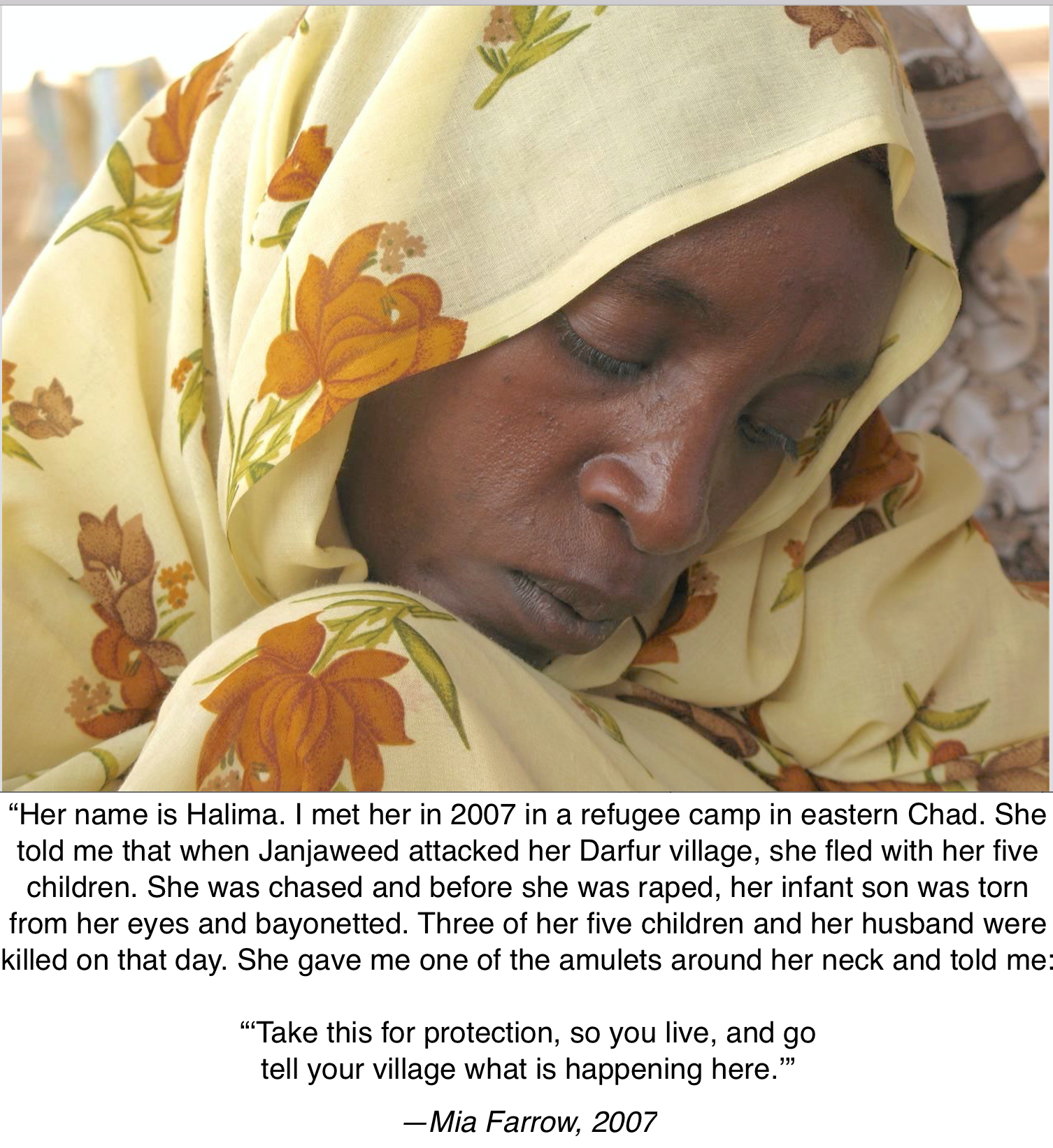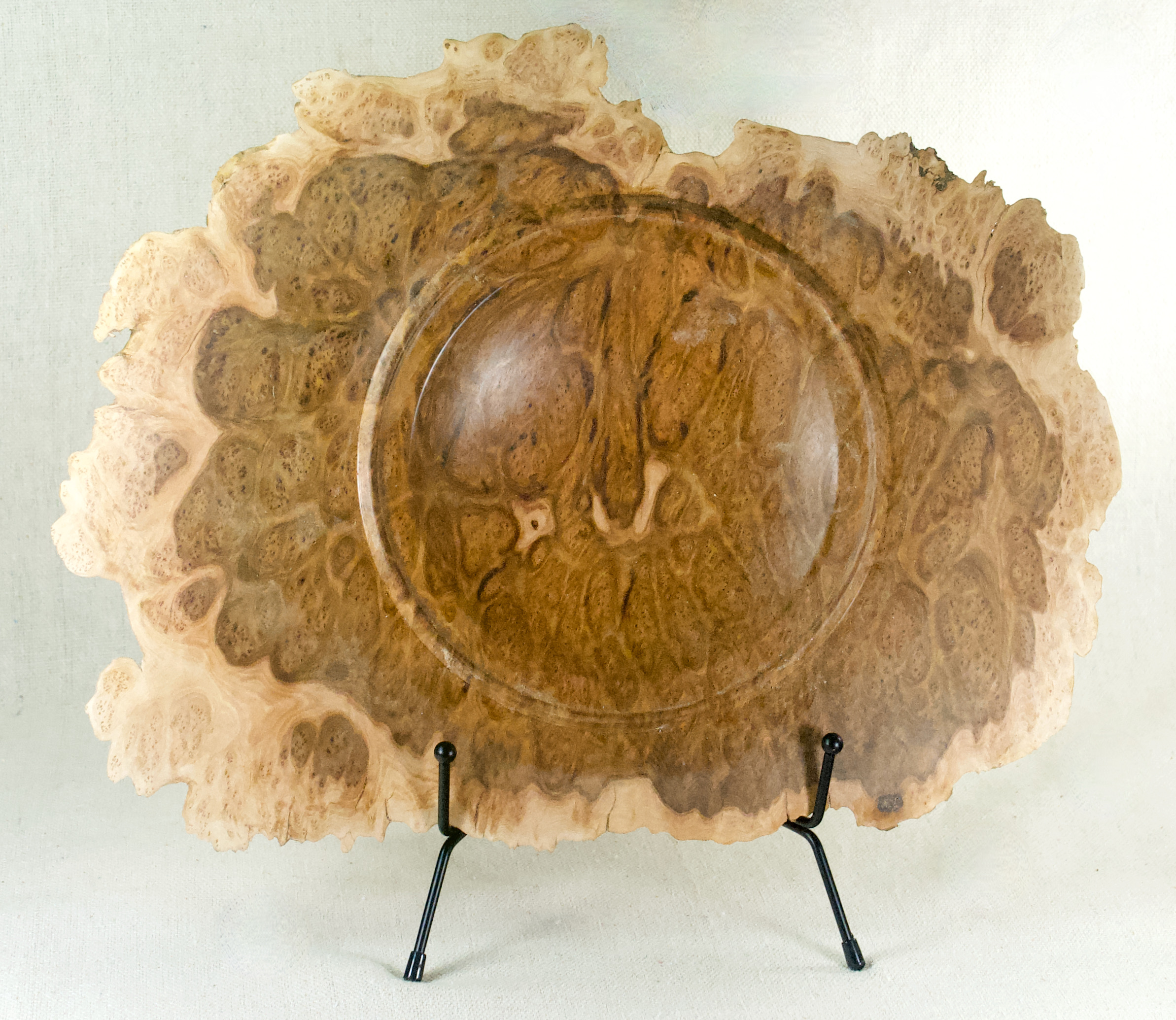Gaffar Mohammud Saeneen and Eric Reeves, Co-Chairs
Julie Darcq, Online Campaign Coordinator; Nancy Reeves, editor and financial facilitator
Overview (Eric Reeves)
The history of the Darfur genocide is slowly dissolving, fading because of the sheer number of years of ethnically-targeted violence, resignation to the region’s realities—especially conspicuous in the Obama and Trump years—and the relentless onslaught of other human disasters and humanitarian emergencies. War in Ukraine—comprising relentless and wholly unjustified civilian destruction and displacement, as well as a wide range in atrocity crimes—offers only the most recent and dramatic example.
Most of my own work on Sudan, now extending over more than twenty-three years, has been given over to providing a substantial archival account of genocidal destruction in Darfur.* A good deal of evidence suggests to me that this has been a largely unnoticed or forgotten effort. But if we are to understand why more than 350,000 people remain internally displaced in Zamzam camp (North Darfur), we need to have some historical sense of how they came to be there in such staggering numbers, why they feel they can’t leave for their homes, villages, and land. We need to understand why in virtually all the many IDP camps in Darfur the fear of return is so similar, as it is among what the UN estimates are more than 350,000 Darfuri refugees in eastern Chad.
Life in an IDP camp is extraordinarily difficult, but people feel the acute necessity of remaining, despite diminishing, indeed already severely attenuated international humanitarian responses. For the alternative in the minds of nearly all is the acute threat of beatings, rapes, robbery, and death—violence that is frighteningly resurgent in most of Darfur. International news reporting on this current violence is almost entirely ignored by non-Sudanese news outlets (the April 24, 2022 by the New York Times is an exception).
Sadly, even the staggering death toll has been ignored by nearly all international news media, which almost universally use a figure of “300,000”; but in fact, this was a “conservative” mortality assessment offered by then UN Humanitarian Coordinator John Holmes in April 2008—14 years ago (and only five years into the genocide). My own research suggests that the figure presently is double this, roughly 600,000 dead, directly or indirectly from ethnically-targeted violence; it is an estimate that reflects a survey of all data and reports on the subject of Darfur’s mortality, the most important of these coming after April 2008.
I invite readers of this update to read some of the archival materials I assemble at the end of this update, but for the present I’ll offer only a single captioned photograph, taken in 2007—15 years ago. It does much to explain the continuing, enormous population of displaced persons from among Darfur’s non-Arab/African ethnic groups—and the terrible challenges of responding to particular episodes of traumatizing sexual violence:
The global “village” would learn a great deal about the fate ofπ women, and girls, like Halima; it would not be enough to sustain pressure on the Khartoum regime of Omar al-Bashir to halt the genocidal violence. Indeed, though waxing and waning over the years, some of the most violent and intensive ethnically-targeted destruction came in the years 2013 – 2019, when Rapid Support Forces (RSF) commander Mohamed Hamdan Dagalo (nicknamed “Hemeti”) undertook a vast regional campaign ordered by al-Bashir. And if al-Bashir is now under nominal arrest, this brutal militia commander is now the second most powerful man in the junta that came to power by means of a military coup (October 2021). He may ultimately be the most powerful man, depending on the outcome of his power struggle with General Abdel Fattah al-Burhan, the most senior officer in the Sudan Armed Forces (SAF).
Returning to Zamzam IDP camp—and leaving aside the deadly political machinations in Khartoum and the junta’s savage repression of the forces pushing for political freedom and democracy—we have a vast example of what the past twenty years have meant, especially for girls and women traumatized by the most brutal and cruel sexual violence. If Darfur is ever to heal itself—and there are no encouraging signs—this population must be attended to with skill, compassion, and in too many cases surgical repair of fistulas resulting from the rapes—typically gang rapes.
That is the ambition of this project: to begin to allow these women and girls to resume something like a normal life, or at least normal within the context of Zamzam IDP camp. Yet serious, typically ruthless violence over the past year largely destroyed the agricultural season for those camp residents who sought to cultivate their lands during the rainy season (May – September) and the fall harvest. Food shortages are acute among those who have most recently arrived at Zamzam camp, and an even greater crisis looms in the form of water shortages.
Of 270 water pumps serving the vast camp population (which may actually be as high as 450,000, according to well-informed sources on the ground), only fourteen are functional. The traditional rainwater collection system (hafiras) has been largely destroyed by Arab militias over the course of the genocide, even as countless wells have been poisoned with corpses—human and animal. The failure of the humanitarian community to repair pumps and wells—when it is clear that the Khartoum junta will provide no resources for such an effort—is a sign of just how much humanitarian commitment and assistance has waned. Here it must be said that officials in Khartoum continue to make life as difficult as possible for INGOs.
Gaffar and I will be making a special effort to repair and maintain at least one of the non-functioning wells, but the costs are very high, given the demand for engineers and hydrologists. Our hope is that we might partner with an INGO.
Life without enough water

 The primary goals of this project will be to continue providing psychosocial counseling to those girls and women in need—often desperate need. When possible, fistula surgeries in nearby El Fasher (capital of North Darfur) will be funded. Testimonials from the girls and women who have benefited from both counseling and surgery may be found here; they are deeply moving.
The primary goals of this project will be to continue providing psychosocial counseling to those girls and women in need—often desperate need. When possible, fistula surgeries in nearby El Fasher (capital of North Darfur) will be funded. Testimonials from the girls and women who have benefited from both counseling and surgery may be found here; they are deeply moving.
But while this is the primary goal of the project, the 20 counselors who make up Team Zamzam (and the two skilled, hard-working men who provide security and transportation) also distribute food and medicine to the very most impoverished and needy. The counselors have a deep understanding of the camp population in each of its four major sectors, and it is on this basis that distributions occur. The very elderly, the disabled, and widowed mothers—especially those caring for orphans—are primary beneficiaries, with attention given as well to those who have very newly arrived at Zamzam, often with nothing in the way of resources.
A full account of the past month has been translated by Gaffar and appears here as an ANNEX to this April update (reflecting all information received as of April 23, 2022). The account below highlights the particular achievements, all funded (including salaries) with a monthly budget of $4,000.
From the Team Zamzam coordinating counselor:
Ramadan package for vulnerable categories
The month of Ramadan in Sudan is the only month of the year when Sudanese people have a powerful craving for sugar. Sugar during Ramadan in Sudan is an essential commodity, heavily consumed in various locally made juices and soups for breakfast. That is why when the month of Ramadan approaches, the price of sugar in Sudan rises dramatically, even though Sudan is a sugar-producing country. After a thorough survey in studying people’s needs, we have decided to spend 75% of the monthly budget [for supplies] on buying sugar to be distributed to the poorest groups in Zamzam as well as one other poorest neighbourhoods in El Fasher. 28 bags of 50kg sugar were purchased and distributed accordingly:
The number of beneficiaries:
- 53 families. Zamzam section A
- 48 families. Zamzam section B
- 61 families. Zamzam section C
- 57 families. Zamzam section D
- 59 families in the Busharyia neighbourhood of El Fasher
A total of 278 families each received 10 pounds for all of Ramadan
Hygiene kits Package
(Distribution of hygiene kits has been suspended until next month due to other necessary priorities.)
Accompanying patients and women to hospitals (one of the most important tasks taken on by the entire Team Zamzam staff):
• A total of 42 adult patients and 11 children complaining of various illness have been accompanied to different hospitals in El Fasher for treatment.
• Total of 23 pregnant women were accompanied to obstetrics and gynecology wards in El Fasher for medical consultation.
• 1 fistula patient has been accompanied to hospital for treatment.
• 2 visits were made to the hospital to check the conditions of 4 children and a number of adults who were injured recently in the latest attacks on East Jebal Mara.
Assessment activities in Zamzam IDP camp
- 22 survey visits have been carried out in 11 neighbourhoods to inspect living conditions, focusing on sanitation, water shortages, and other issues of concern to the camp’s inhabitants.
Female Genital Circumcision
Four meetings were held with women leaders within the camp, at various locations, to discuss the psychological impact of female genital circumcision on young girls, and how to prevent this practice from continuing. As a result of this meeting, a new volunteer group has been set up to launch a new initiative for raising awareness.
Psychosocial Counseling
Since the coming of the month of Ramadan, the movement of people during daytime has significantly decreased because of high temperatures, especially after midday. As a consequence, the daily program of counseling sessions has been shifted from daytime to the time after breakfast hours and in the evening from 9pm to midnight. Despite this slight change in our daily schedule, the programme continues with high success rates.
Ultimately, this continuing need for counseling sessions reflects the grim status quo Darfur and the continuing, indeed accelerating sexual violence in rural areas and villages. What has made this program so fruitful is the collective ambition and the remarkable determination of the counselors, who tirelessly work day and night to create a lasting and friendly sanctuary, rescuing many young girls from suicidal tendencies. Because of this program, many have found renewed purpose in life, while many others have turned their fragilities to strength in order to encourage their fellow victims to be brave and patient.
Every day, more and more girls and women share their horrors, with tears; but very often they leave the sessions with smiles and hopes visible on their frail faces.
Counseling sessions:
- 29 group counseling sessions
- 53 individual counseling sessions
Total: 82 sessions:
- 13 attending for the first time
- 22 attending for the second time
- 17 attending for a third time
- 26 attending for a fourth (or more) time
Urgent Funding Needs
The capacity of the Team Zamzam project is now constrained by a sharply reduced budget. In all of February, funding was available for only one patient in need of fistula surgery; the same has been true last month (March) and this month (April). The waiting list is still over 120 girls and women, more than 30 of them judged to be in “critical” condition by the now highly experienced group of those on Team Zamzam most responsible for fistula care. Ideally, we would be able to fund at least three or four fistula surgeries per month. More food and sanitizing supplies are also urgently needed.
How to Help
Any assistance will be greatly appreciated by Team Zamzam, and by the girls and women whose suffering they seek to alleviate.
Those wishing to assist in funding the work of Team Zamzam may send a check directly to Eric (Eric Reeves, 31 Franklin St., Northampton, MA 01060) or purchase one of his woodturnings: https://www.ericreeves-woodturner.com/gallery https://www.ericreeves-woodturner.com/gallery
100% of the purchase price of every woodturning directly supports the project in Zamzam.
While not tax-deductible, a contribution should be made with the knowledge that our project operates with truly extraordinary efficiency, in ways matched by no humanitarian organization operating in Darfur that I am aware of, a region I have been researching for two decades. There is absolutely no overhead for this project.
Previous updates are archived at: https://www.ericreeves-woodturner.com/blog/
A “You Tube” video of Eric describing the project can be found at: https://youtu.be/QsRUa7GoVgY
************
DARFUR AND HISTORY: AN ARCHIVAL EFFORT BY ERIC REEVES
Books:
A Long Day’s Dying: Critical Moments in the Darfur Genocide (Key Publishing, 2007) (review commentary at http://www.sudanreeves.org/Article285.html)
Compromising with Evil: An archival history of greater Sudan, 2007 – 2012 (October 2012 in eBook format, www.CompromisingWithEvil.org) (review commentary at http://sudanreeves.org/2013/08/30/compromising-with-evil-an-archival-history-of-sudan-2007-2012-commentary/)
Genocidal Violence in Darfur, Sudan: A Continuing Archival History, 2013 – 2019 (September 2019 in eBook format, http://sudanreeves.org/2019/09/15/violence-in-darfur-sudan-a-continuing-archival-history-2013-2019/
Monographs:
“They Bombed Everything that Moved”: Aerial Military Attacks on Civilians and Humanitarians in Sudan, 1999 – 2011, May 9, 2011 (analysis and bibliography of sources, 80+ pages with accompanying Excel spreadsheet, at | https://wp.me/s45rOG-7566
“Changing the Demography”: Violent Expropriation and Destruction of Farmlands in Darfur, November 2014 – November 2015 | December 2015—includes framing analysis, extensive data spreadsheet covering all reported incidents of violence against farmers and farmland in Darfur, as well as a detailed mapping of these data onto three maps encompassing all of Darfur (monograph translated into Arabic) | http://wp.me/p45rOG-1P4
Continuing Mass Rape of Girls in Darfur: The most heinous crime generates no international outrage | January 2016 | Eric Reeves, author | Maya Baca, research and editing—includes framing analysis, extensive data spreadsheet for 2014 and 2015, as well as detailed mapping of these data onto three maps encompassing all of Darfur (monograph translated into Arabic) | http://wp.me/p45rOG-1QG
UNAMID Withdrawal and International Abandonment: Violence in Darfur 2017 – 2019, a statistical analysis, May 20, 2019, Eric Reeves, author; Maya Baca, research, data collection, and editing | https://wp.me/p45rOG-2qm
RECENT ESSAYS OF PARTICULAR NOTE
“Confronting the Horror, Staying Alive,” Website of The Arithmetic of Compassion, December 2019— https://www.arithmeticofcompassion.org/blog/2019/12/30/confronting-the-horror-staying-alive
“What Will Be Remembered? History and the Darfur Genocide,” posted on | September 2019—https://wp.me/s45rOG-9441
A full record of publications, academic presentations, broadcast interviews, and related activities may be found here.





